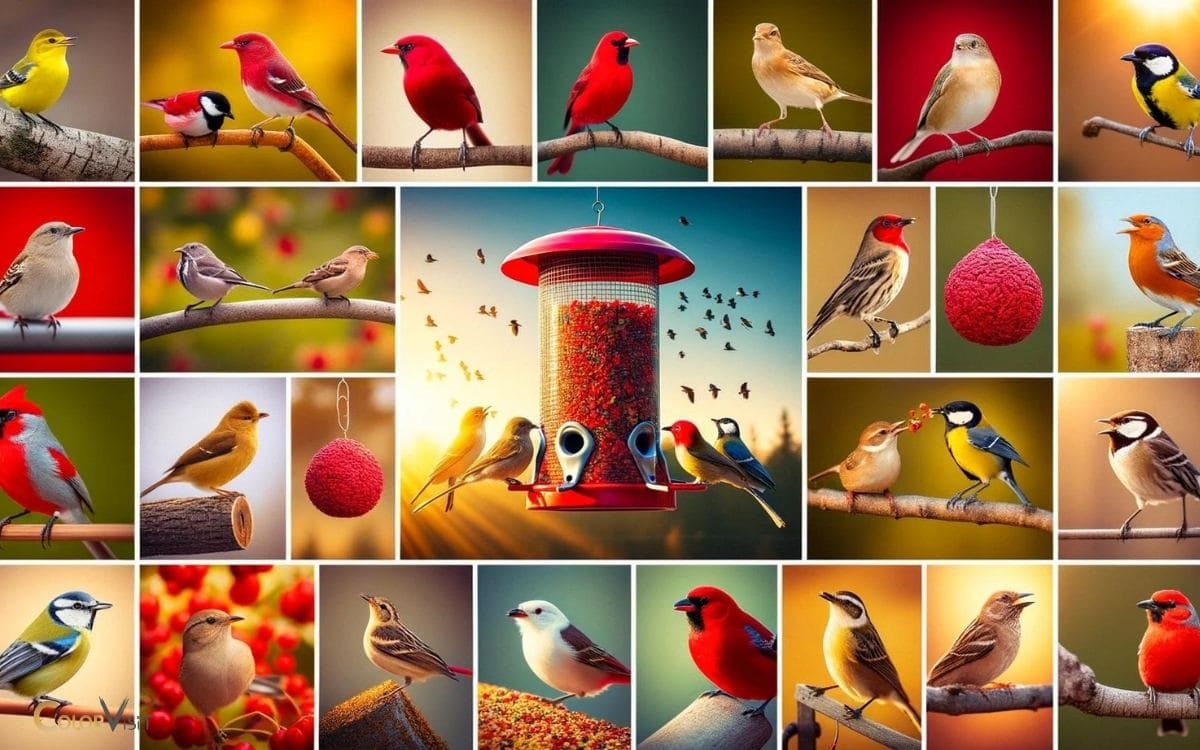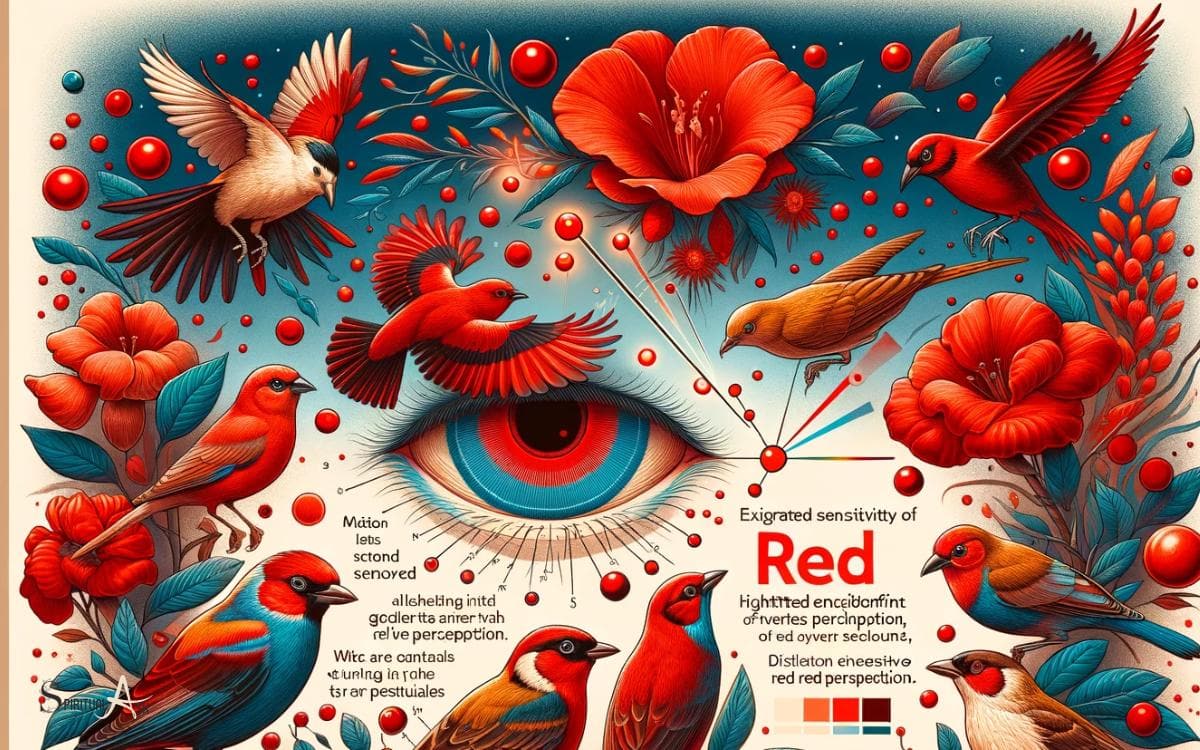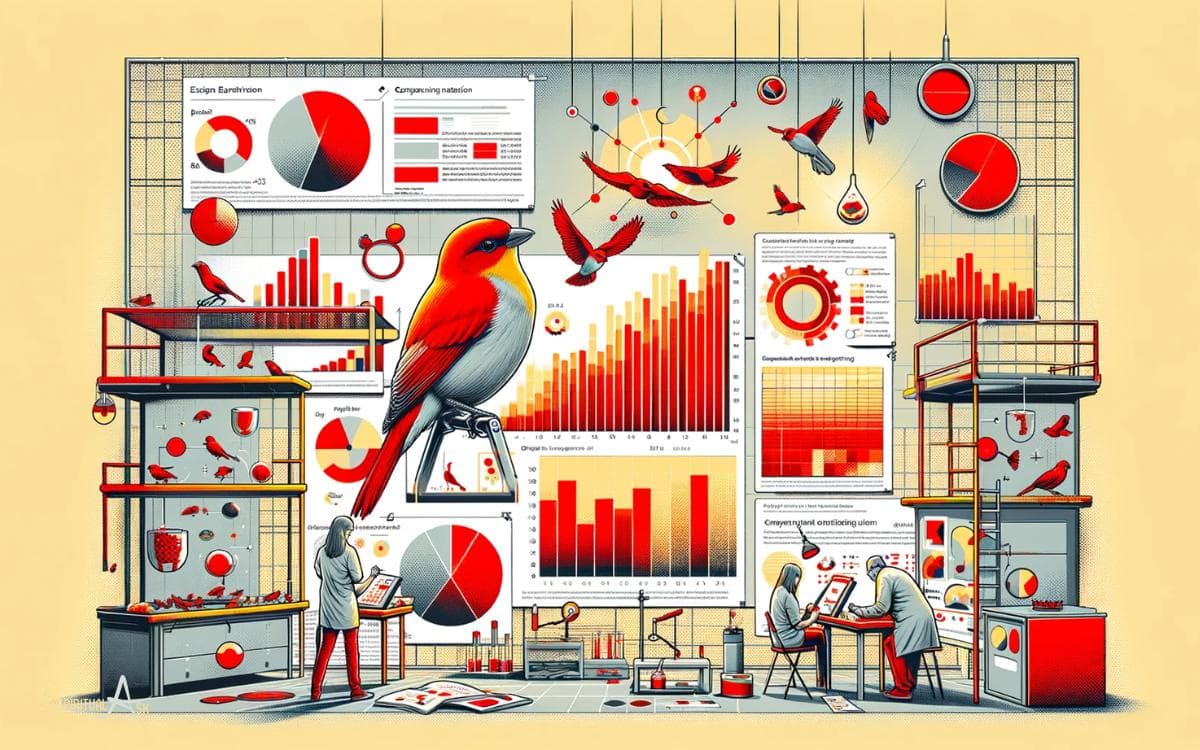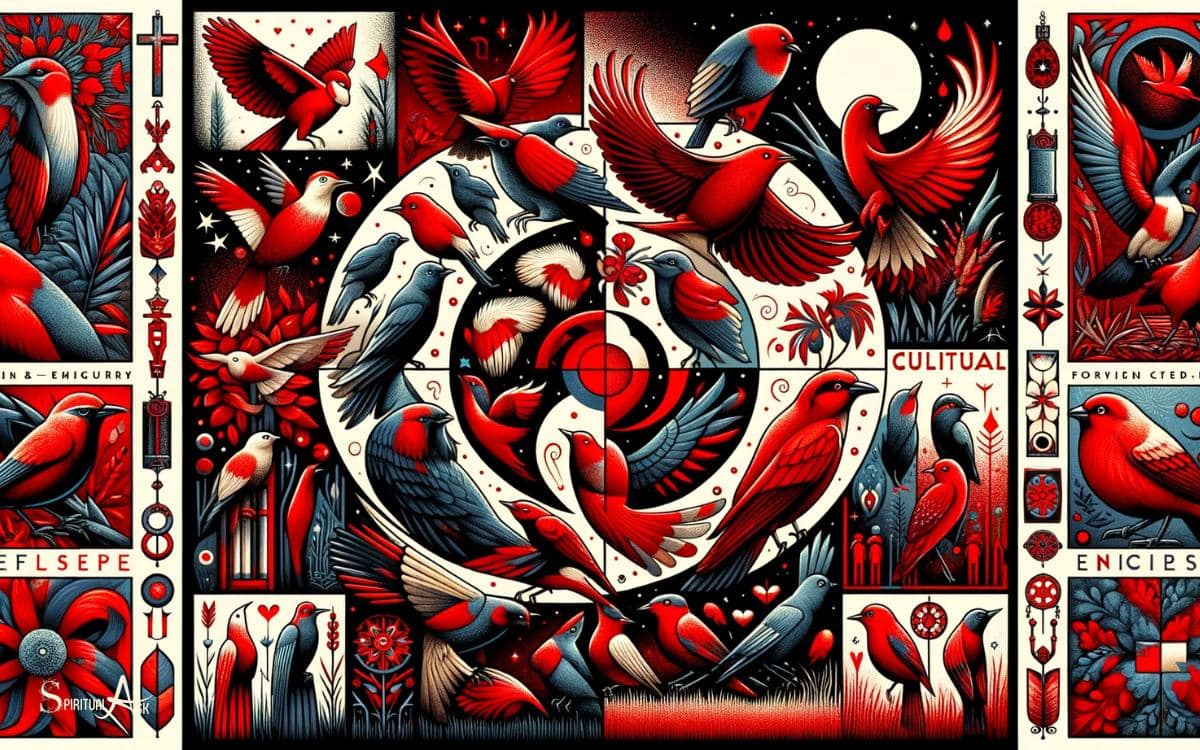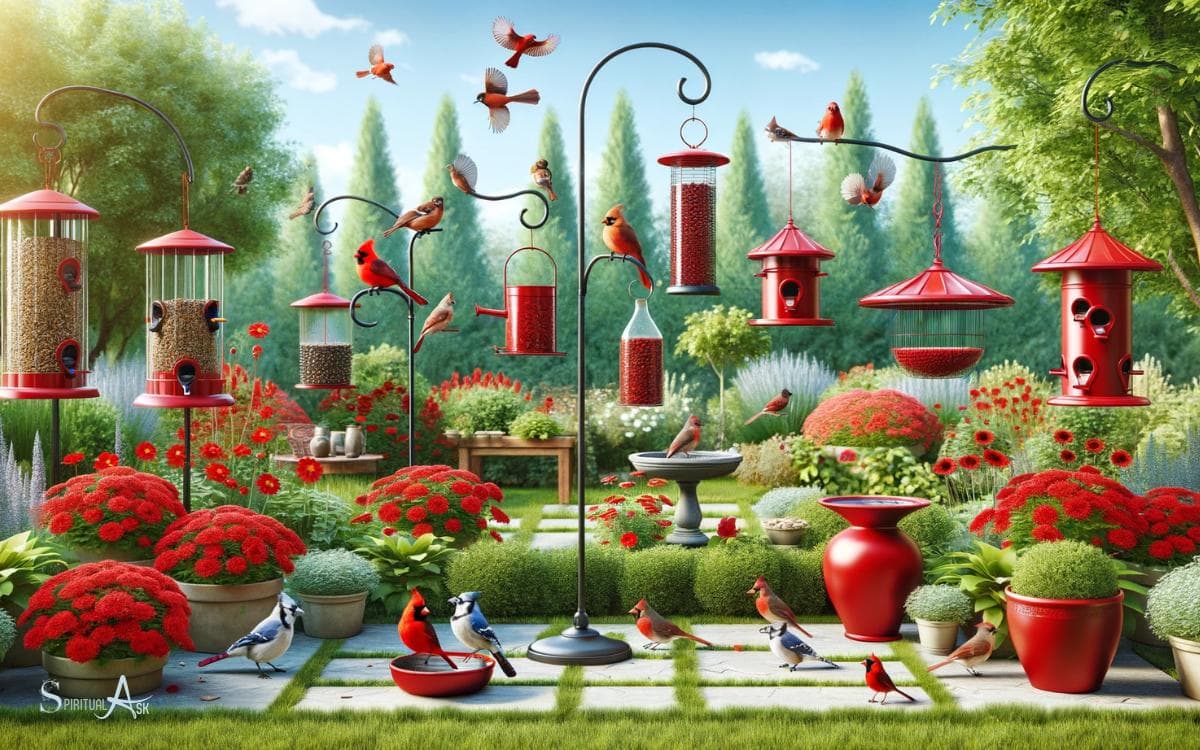Do Birds Like the Color Red? Yes!
Yes, birds are attracted to the color red. This is mainly because red resembles some of the foods birds consume.
Red plays a significant role in the world of birds. It’s not only a color they can see, but one that has a deep-rooted biological and behavioral significance.
For instance, red often signals food sources or enhances mating displays, making it a captivating subject in avian behavior.
In the realm of avian research, the impact of the color red on bird behavior and evolution offers fascinating insights, reinforcing the complexity of nature’s design and the intricate interactions within it.
Key Takeaway
The Significance of Red in Avian Perception
The significance of the color red in avian perception has been a subject of considerable scientific interest in understanding how birds perceive and interact with their environment.
- Red is a prominent color in the natural environment and has been found to play a crucial role in the behavior and ecology of birds.
- Studies have shown that red is associated with signaling dominance, attracting mates, and identifying food sources in avian species.
- This color has also been linked to influencing foraging behaviors and impacting the visual acuity of birds.
- Understanding the role of red in avian perception is essential for developing effective conservation strategies, designing bird-friendly urban environments, and creating innovative bird deterrent solutions.
Further research into the mechanisms of avian color perception and the specific effects of red in different bird species is crucial for advancing our understanding of avian cognition and behavior.
Evolutionary Influences on Birds’ Color Preferences
The color preferences of birds are influenced by evolutionary factors, particularly in the contexts of food selection and mating behavior.
Through evolution, birds have developed an inherent ability to associate certain colors with specific types of food, leading to distinct color preferences.
Additionally, visual signaling in mating has also played a crucial role in shaping birds’ color preferences. Certain colors may convey information about a bird’s health, fitness, and reproductive potential.
Color and Food Selection
Birds exhibit color preferences in their food selection, influenced by evolutionary factors.
This phenomenon can be attributed to the following reasons:
- Visual Detection: Birds have developed the ability to detect certain colors more easily than others. This is often related to the colors of their preferred food sources. For example, many fruits and berries that birds consume are vibrant in color.
- Nutritional Value: Certain colors in nature are indicative of specific nutritional benefits. For instance, the bright red color of ripe fruits often signifies high levels of essential nutrients, such as antioxidants and vitamins.
- Predator Avoidance: Evolution has also shaped birds’ color preferences based on the need to avoid predators. Birds may prefer to feed on inconspicuously colored prey or food items to reduce the risk of being detected and captured by predators.
Visual Signaling in Mating
In the context of evolutionary influences on birds’ color preferences, visual signaling plays a crucial role in mating behaviors and partner selection.
- Birds have evolved to use their plumage and coloration as a means of communication during courtship rituals.
- Bright and vibrant colors in males often signal genetic fitness and the ability to provide for offspring, thus influencing the female’s choice of mate.
- This preference for colorful traits in males, known as sexual selection, has driven the evolution of diverse and striking plumage in many bird species.
- Additionally, color signals can indicate hormonal status, health, and reproductive readiness, allowing for effective mate selection.
Understanding the evolutionary significance of visual signaling in mating behaviors provides valuable insights into the complex interplay between color preferences and reproductive success in birds.
Red as a Signal for Food and Mating
One might observe that red serves as a signal for food and mating among avian species.
- Food Availability: Some bird species, like the Northern Cardinal, are attracted to the color red as it can indicate the presence of ripe fruits and nutritious seeds.
- Mating Displays: In many bird species, males with vibrant red plumage are perceived as more attractive by females. The red coloration signals good health, genetic fitness, and the ability to provide for offspring, making it a crucial factor in mate selection.
- Territorial Signaling: Red plumage or markings can also serve as a territorial signal, indicating ownership of a prime feeding or nesting area. This competitive advantage can lead to increased reproductive success and access to abundant food resources.
Experiments and Findings on Birds’ Responses to Red
Experimental studies have revealed that birds show heightened sensitivity to the color red, particularly in the context of foraging and mating behaviors.
- For instance, research has demonstrated that red-colored food sources are more attractive to certain bird species, potentially due to the association of red with ripeness and nutrient content in fruits.
- Additionally, in mating displays, the color red has been found to play a significant role, with male birds displaying red plumage or patches to attract females.
- Furthermore, experiments using artificial red signals have provided evidence of birds’ preference for this color.
- These findings contribute to a deeper comprehension of avian visual perception and decision-making processes, shedding light on the evolutionary significance of red in bird behavior.
This understanding of birds’ responses to the color red has significant implications for comprehending their cultural and symbolic associations with red in bird behavior.
Cultural and Symbolic Associations With Red in Bird Behavior
A significant cultural and symbolic association with the color red in bird behavior is the use of red plumage or patches by male birds to attract females during mating displays.
- Sexual Attraction: The vibrant red color in birds’ plumage is often associated with sexual attraction and mating success. Studies have shown that female birds are more attracted to males with brighter and more intense red coloration.
- Territorial Defense: In some bird species, red plumage is also linked to territorial defense. Males with red markings may use their coloration to signal dominance and establish their territory, deterring potential rivals and attracting potential mates.
- Cultural Significance: In various cultures, red has been symbolically associated with vitality, passion, and power. This cultural symbolism may influence human interpretations of bird behavior and contribute to the significance of red in bird mating displays.
Practical Applications for Attracting Birds With Red Accents
To effectively attract birds with red accents, it is essential to strategically incorporate red-colored elements in bird feeders, nesting boxes, and garden ornaments.
- Research has shown that birds are attracted to the color red, as it can signal a food source, a safe nesting site, or potential mates.
- When designing bird feeders, consider adding red perches, roofs, or decorative elements to increase their visibility to birds.
- Similarly, nesting boxes with red entrances or accents can be more appealing to certain bird species, encouraging them to nest in your yard.
Garden ornaments such as red wind spinners or hanging red decorations can also serve as visual cues for birds, making your outdoor space more attractive to them.
Conclusion
The color red holds a significant sway over avian perception due to its evolutionary ties to food and mating signals.
Experiments have demonstrated birds’ heightened responses to red, and its cultural and symbolic associations further enhance its impact on bird behavior.
Practical applications for attracting birds with red accents abound, making it a valuable tool for bird enthusiasts and researchers alike.
